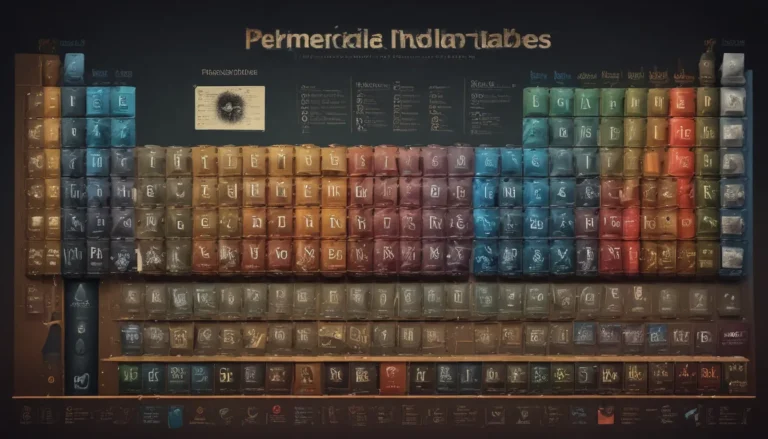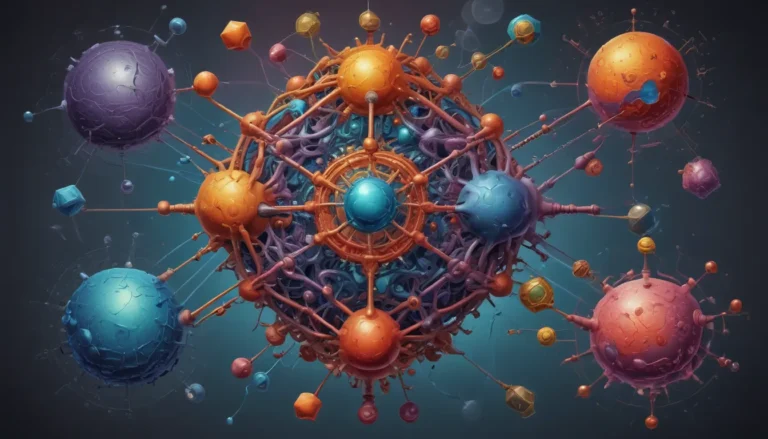A Note About Images: The images used in our articles are for illustration purposes only and may not exactly match the content. They are meant to engage readers, but the text should be relied upon for accurate information.
Chemistry is a realm of limitless wonder, where complex systems like the isomorphous system continue to captivate scientists and researchers worldwide. The isomorphous system, with its unique properties and behaviors, challenges our understanding of materials and opens doors to endless possibilities.
Exploring the Enigmatic Isomorphous System
Isomorphous systems are akin to secret twins in the world of chemistry, sharing identical crystal structures but with different chemical compositions. This similarity leads to compounds having comparable physical properties, paving the way for exciting applications in drug development and materials science. It’s like solving a magical puzzle, matching crystal structures to unlock the secrets of compounds and unleash innovations in chemistry.
Unveiling the Secrets of Isomorphous Systems

1. Identical Crystal Structures
Isomorphous systems consist of different compounds that share the same crystal structure, despite their varying chemical compositions.
2. Similar Physical Properties
Compounds in an isomorphous system often exhibit similar physical properties like melting points, boiling points, and solubilities, making them challenging to differentiate based on these characteristics alone.
3. Formation of Solid Solutions
Due to their shared crystal structures, compounds in an isomorphous system can blend to form solid solutions, resulting in a diverse range of materials with varying properties.
The Applications and Evolution of Isomorphous Systems
4. Common Presence in Alloys
Metallic alloys frequently showcase isomorphous characteristics, enabling engineers to manipulate their properties by adjusting the composition of various elements.
5. Historical Origins
The concept of isomorphous systems traces back to the early 1800s when German chemist Eilhard Mitscherlich first noted the similarities in crystal structures among certain compounds.
6. Role in Drug Development
Understanding isomorphous behavior aids scientists in designing more effective pharmaceutical drugs with desirable properties, enhancing the realm of medicine.
7. Color Variability
Compounds within an isomorphous system may exhibit diverse colors due to the presence of different transition metals or other chromophores, adding a visual dimension to their properties.
Diving Deeper into Isomorphous Systems

8. Utilization of X-ray Crystallography
The study of isomorphous systems often involves the use of X-ray crystallography, a potent technique that unveils the atomic arrangement within crystals, elucidating the intricate relationships between compounds.
9. Potential for Phase Transitions
Isomorphous systems can undergo phase transitions triggered by changes in temperature or pressure, resulting in alterations in crystal structures and properties.
10. Impact of Lattice Matching
Lattice matching plays a vital role in the formation of isomorphous systems, influencing the compatibility of crystal structures among different compounds.
The Diverse Applications of Isomorphous Systems

11. Contributions to Materials Science
Researchers leverage isomorphous systems to explore the correlation between crystal structure and material properties, leading to advancements in various technological applications.
12. Solid-State Transformations
Under specific conditions, compounds within an isomorphous system can experience solid-state transformations, leading to changes in their crystal structure and properties.
13. Significance in Mineralogy
Isomorphous systems play a pivotal role in mineralogy, aiding geologists in identifying and categorizing minerals based on their crystal structures.
14. Facilitating Innovation
Understanding isomorphous relationships between compounds fuels the development of new materials enriched with enhanced properties and functionalities, driving innovation in various industries.
Conclusion: Embracing the Wonders of Isomorphous Systems
In conclusion, the isomorphous system stands as a beacon of fascination in the realm of chemistry, offering a myriad of mind-blowing facts and significant applications. From revolutionizing materials science to enhancing drug development, the impact of isomorphous systems reverberates across diverse scientific realms, promising endless avenues for exploration, discovery, and innovation.
FAQs: Answering Your Burning Questions
What does the term “isomorphous system” signify?
The term “isomorphous system” denotes a phenomenon where two or more substances share similar crystal structures, enabling seamless substitution without altering the overall structure.
Can you provide examples of isomorphous systems?
One prominent example of an isomorphous system is the copper-nickel alloy, where copper and nickel seamlessly substitute for each other due to their identical crystal structures.
What practical applications do isomorphous systems offer?
Isomorphous systems find utility across various industries, including metallurgy for creating high-performance alloys, geology for rock identification, and pharmaceuticals for drug design optimization.
How is the isomorphous system studied?
Isomorphous systems undergo study through techniques like X-ray crystallography, spectroscopy, and thermal analysis to discern crystal structures, compositions, and properties.
Are isomorphous systems limited to only two substances?
No, isomorphous systems can involve multiple substances with similar crystal structures, broadening the scope of substitution possibilities and applications.
In essence, delving into the mysteries of isomorphous systems reveals a world of intrigue and discovery, promising to reshape industries and fuel scientific advancements. Let the fascination of isomorphous systems inspire your journey into the realm of chemistry and beyond, where the boundaries of knowledge continue to expand, unveiling new horizons of innovation and understanding.






